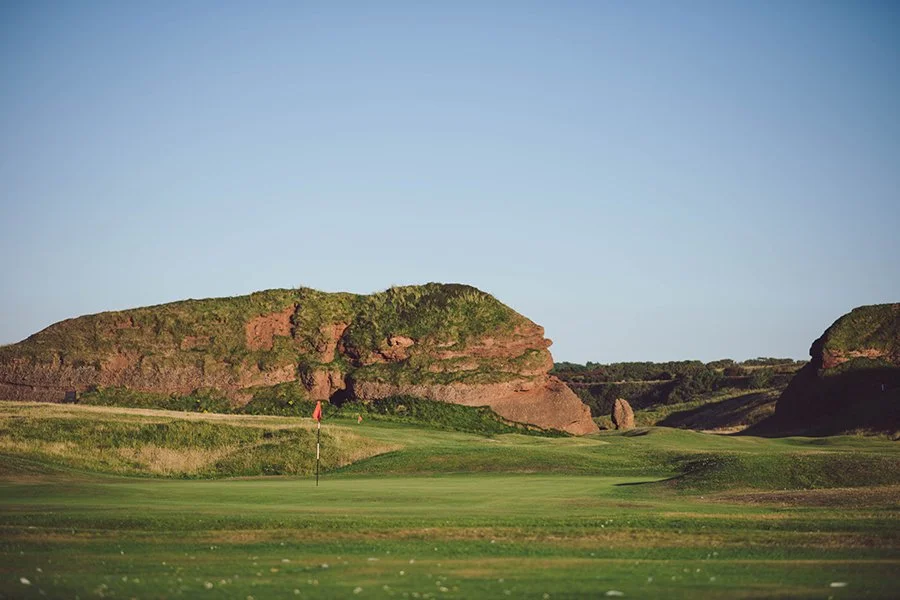Where To Next - Banff
BY MURRAY BOTHWELL
5 MIN READ
Many are now familiar with the NC500, the circuitous loop of Scotland’s wild and rugged west through tiny towns and triumphant landscapes. However, the coastal road along Moray’s northern edge from Forres in the west to Aberdeenshire’s Fraserburgh in the east is classically stunning and stands equal in its scenery and history. Sunsets aside, as there are only a few locations in the UK which allow you to see the sun dip behind land on the distant horizon whilst reflecting off a shimmering sea in front of you, the picturesque fishing villages of the Banff and Buchan coast rival many of those in far flung Cornwall and Devon.
Duff House Royal
For the non-golfer this is a magnificent coastline to explore. Pine forests and golden sands are punctuated by the outpouring of lazy estuaries, brimming with birds, otters, seals and dolphins whilst bracing clifftop walks along dramatic rocky headlands promise a glimpse of secret coves and sea stacks that were common to smugglers of the time. Castles, forts and shoreline-hugging villages such as Pennan, which featured in the film Local Hero, provide a rich variety of sites to visit. For the golfer, this seventy-mile stretch has an equally rich assortment of links and parkland venues. Leaving aside the numerous courses which lie even a few miles inland, the Forres-Fraserburgh route provides fourteen variations on a theme. From some of the oldest golf clubs in the world to those which have been skilfully sculpted by the hand of Morris, MacKenzie and Mother Nature these 9- and 18-hole wonders will test the best and bring a smile at the final putt, regardless of the score.
The River Deveron splits the neighbouring seaside towns of Banff and Macduff, and provides a boundary to Duff House Royal, one of the best parkland courses in Scotland. Its challenging two-tier greens were a forerunner of Dr Alister MacKenzie’s Augusta National, and the course sits in beautiful, manicured parkland from which glimpses of the Moray Firth can be seen. Its Edwardian royal patronage comes from Louise, who was known as the Princess Royal, not the Royal Princess and therefore the only royal golf club where the royal title is used as a suffix and not a prefix. At just over 6,000 yards off the back tees its par-69 is not the toughest, but thanks to MacKenzie’s well-positioned bunkers and skilful use of the terrain it remains a regular feature on the Amateur Open circuit.
Cullen Links
To the west of Banff, along the A98 and through scenic fishing villages and past more castles, lies the village of Cullen. Spanned by the highly impressive Cullen Viaduct, this medieval royal burgh dates back to 962AD and is famous for the origin of Cullen Skink, a hearty white-fish based creamy soup; a bit like Boston’s Clam Chowder without the clams. It’s also gathering notoriety for its unique Morris-designed 18-hole course which makes full use of the natural wonders of the beach and bay. Initially starting down at sea level, the links quickly climbs higher with a tricky short par-3 to lush fairways atop an ancient raised beach. From here you are treated to the full panorama of the bay, its massive red sandstone sea stacks sitting squarely in the middle of the course. Visually it’s reminiscent of Australia’s 12 Apostles, sat just off the beach. With ten par-3s and one par-5 the course plays harder than its yardage suggests because of the clever way that some of the holes are routed around the stacks, or over them, to reach immaculate greens. Cullen Links is all about fun, showing off your short game and leaving the 460cc in the car.
Fraserburgh
To the east the utterly scenic B9031 hugs the coast, taking you so close to the waves in some villages that the high tide crashes onto the rocks and covers the car in salty spray. There’s nothing to your left except the expansive horizon. Ahead lies the town of Fraserburgh, once home to one of the country’s largest fishing fleets and site of the Scottish Museum of Lighthouses, an essential fixture of these rocky coastlines. It’s also home to the 7th oldest golf club in the world, who are fortunate enough to play across the magnificent Corbiehill Course and have the option of the shorter Rosehill Course too. Their fairways are nature’s masterpiece: a classic links with grassy moguls, humps and hollows leading you through ancient dune complexes and delivering 18 perfect experiences.
The north-east corner of Scotland has it all: big skies, picturesque villages and so many golf courses to choose from. Your only choices are when, where and which ones.




